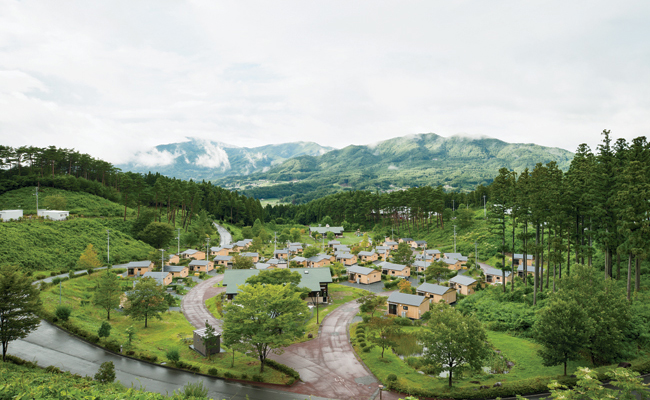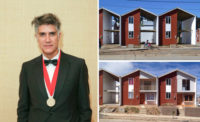
Masayuki Harada, Daisuke Sugawara
Sumita-cho, Iwate Prefecture, Japan
Having received the green light from the Iwate Prefectural government to erect 60 units of temporary housing for Rikuzentakata, a seaside town of 24,000 that lost 48 percent of its homes, Sumita Jutaku Sangyo, a timber construction company based in the blighted prefecture, tapped Tokyo-based architects Masayuki Harada and Daisuke Sugawara to develop a scheme for the new homes on the appointed site—a hilly inland campground designed for recreational vehicles.
Located inland in Sumita-cho, a town that survived the disaster relatively unscathed, the campsite’s individual berths were equipped with utility hookups, and seemed an ideal place for interim housing. But the undulating landscape did not mesh with the construction firm’s row-house-style housing blocks. “They’re great carpenters but they are not urban planners,” says Sugawara. Assuming that role, the architects proposed incorporating the existing infrastructure where possible, and devised a site plan.
Though the prefectural government initially discouraged using the campground’s utility lines, the architects were opposed to starting from scratch. That would be a costly, time-consuming process for an interim project intended to eventually revert back to a campground. Instead, they persuaded authorities to beef up the existing electricity and water supply, add telephone and other communication conduits, and install more water-purification machines to assist with sewage.
Within each bay, the architects positioned a single, 320-square-foot house at an angle relative to the existing street. “If we had aligned them in a row, no one would have privacy,” explains Harada. This solution yielded gardens in between the units where neighbors can interact. It also positioned the houses closer to the street and, therefore, to the existing supply lines, minimizing the quantity of additional piping needed to attach each house to the system.
“In the end, it was a new housing area that looks like an old village,” says Sugawara. “Our project may not have punch,” he says. “But we have improved local life with our small design.”
ARCHITECT: Masayuki Harada, Daisuke Sugawara.
BUDGET: N/A.
CONTEXT: Occupying an existing campground, the houses were each built within a day by two carpenters out of prefabricated timber components. When no longer needed, the houses will be converted into wood pellets suitable for heating fuel.
People |
Products |



Post a comment to this article
Report Abusive Comment